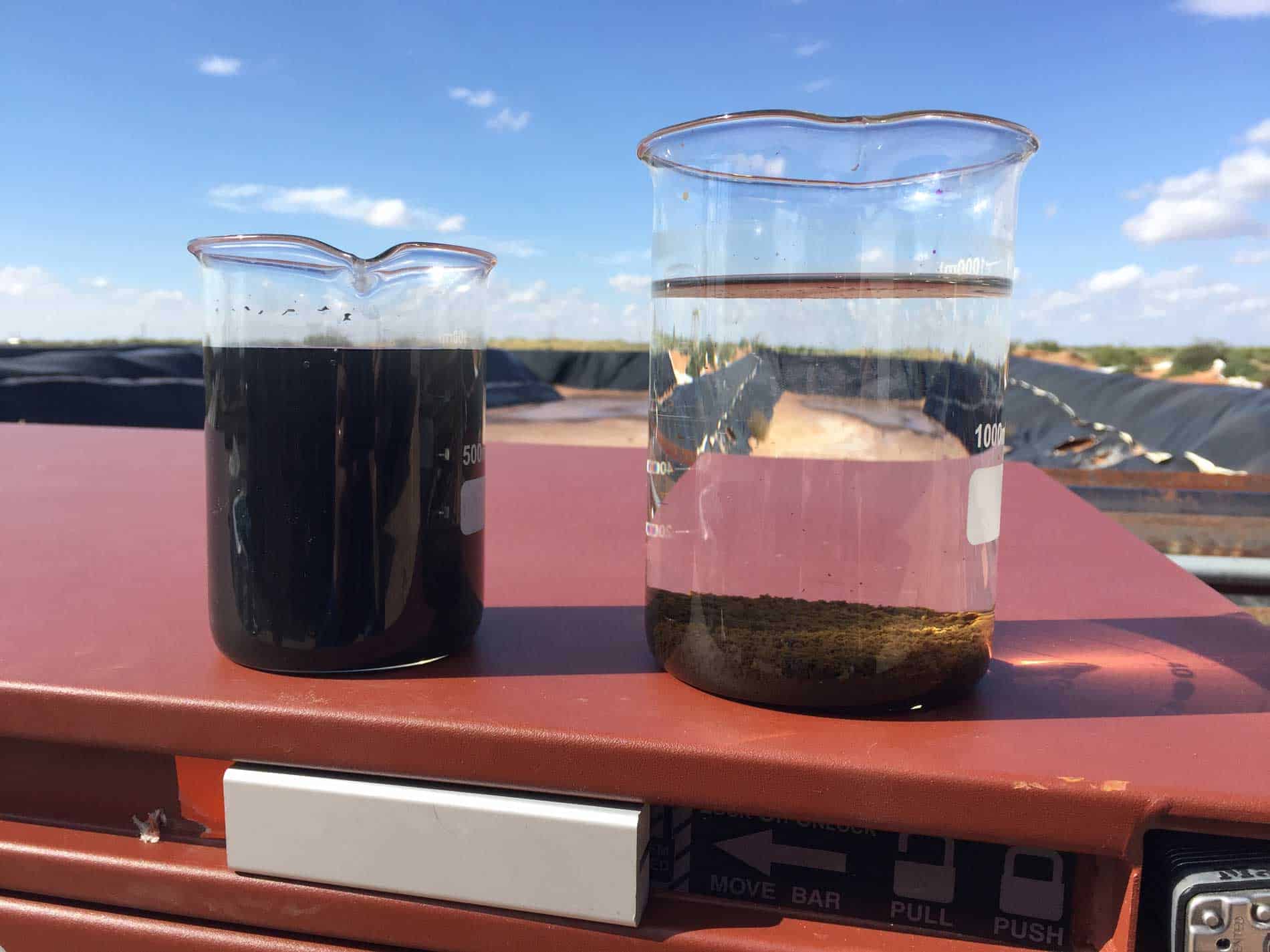Scaling Tendency Testing in Produced Water
The process of scaling in produced water is a critical concern within the oil and gas sector. Scaling refers to the formation of solid mineral deposits within pipelines, equipment, and other flow lines which can lead to reduced efficiency or even complete blockage of these systems.
Produced water typically comprises various dissolved minerals and salts that are brought up from underground reservoirs during oil and gas extraction processes. These substances can precipitate out as scales under certain conditions such as temperature changes, pressure fluctuations, or contact with surfaces. Identifying the scaling tendency in produced water is essential for preventing these issues.
Our laboratory employs advanced analytical techniques to assess the potential for scaling in produced waters. This service involves a comprehensive suite of tests designed to evaluate key factors influencing scale formation including pH levels, ionic compositions, concentrations of specific ions like calcium and magnesium, as well as temperature variations.
The testing procedure begins with proper sample collection from field locations ensuring representative samples are obtained without contamination. Once collected, these samples undergo rigorous analysis using sophisticated instruments capable of detecting even trace amounts of potentially scaling compounds.
Our team utilizes internationally recognized standards such as ASTM D1203 and ISO 15687 to ensure our methods comply with industry best practices. By doing so we provide clients with reliable data that can be used confidently for decision making purposes related to production optimization, equipment selection, or treatment process design.
Understanding the scaling propensity of produced water allows operators to implement effective preventive measures early on in their operations cycle thereby reducing maintenance costs and enhancing overall operational efficiency. Our laboratory's expertise in this area makes us uniquely positioned to support your organization in achieving these goals."
Scope and Methodology
The scope of our scaling tendency testing service includes assessing the propensity for calcium carbonate, barium sulfate, and other common scales that may form under typical operational conditions. We employ a variety of analytical techniques including X-ray diffraction (XRD), Fourier transform infrared spectroscopy (FTIR), atomic absorption spectrophotometry (AAS), and ion chromatography to identify potential scale-forming compounds.
| Test Parameter | Description |
|---|---|
| pH Level | Determines the acidity or basicity of the produced water sample which influences its susceptibility to scaling. |
| Total Dissolved Solids (TDS) | Measures the concentration of dissolved minerals and salts present in the water. |
| Calcium Concentration | Assesses the amount of calcium ions available for potential scale formation. |
| Magnesium Concentration | Evaluates magnesium content which can contribute to scaling issues. |
Industry Applications
The insights gained from our scaling tendency testing are invaluable across multiple facets of the oil and gas industry. Quality managers rely on this information to ensure optimal performance of their facilities by predicting where scale buildup might occur.
Compliance officers use these results to demonstrate adherence to regulatory requirements regarding water management practices. R&D engineers incorporate these findings into new product development efforts aimed at improving flowline integrity and longevity.
For procurement professionals, understanding the scaling tendencies helps in selecting appropriate materials for constructing or repairing pipelines and other equipment used in production processes."
Use Cases and Application Examples
| Case Study | Description |
|---|---|
| A Case of Offshore Platform Scaling | In one instance, an offshore platform experienced severe scaling issues leading to reduced flow rates and increased operational costs. Our testing revealed high concentrations of calcium ions along with favorable pH levels promoting scale formation. Armed with this knowledge, the operator adjusted their treatment processes resulting in significant improvements." |
| Onshore Pipeline Efficiency Improvement | An onshore pipeline faced challenges due to scaling which affected its operational efficiency. By applying our testing methodology, it was determined that certain sections of the pipeline had higher concentrations of magnesium leading to increased likelihood of scale deposition. This led to targeted interventions improving both flow and reliability." |





